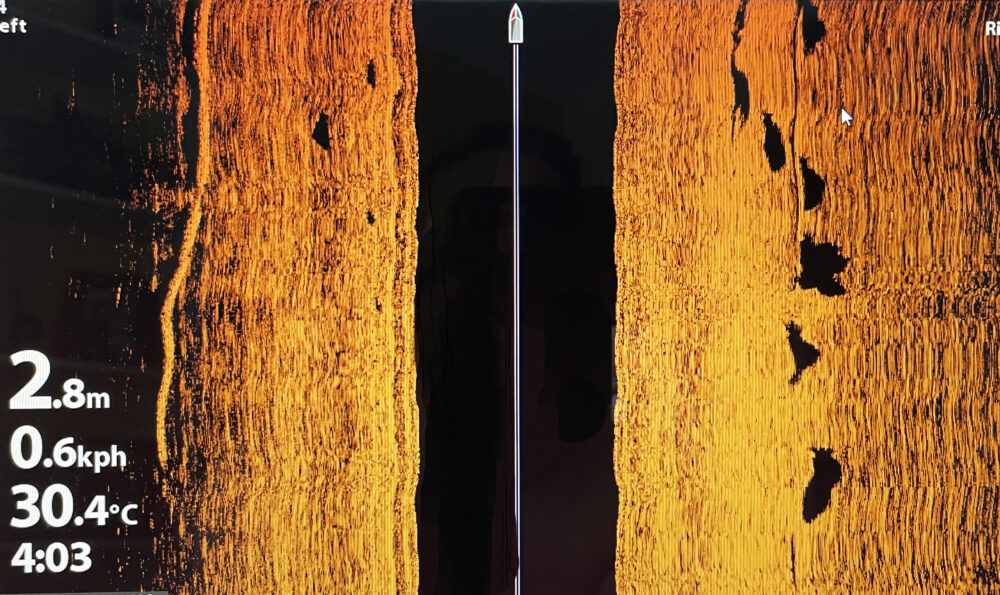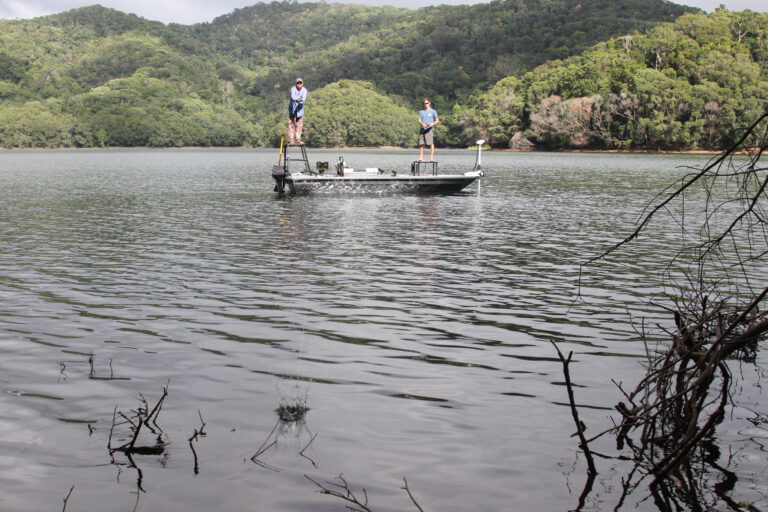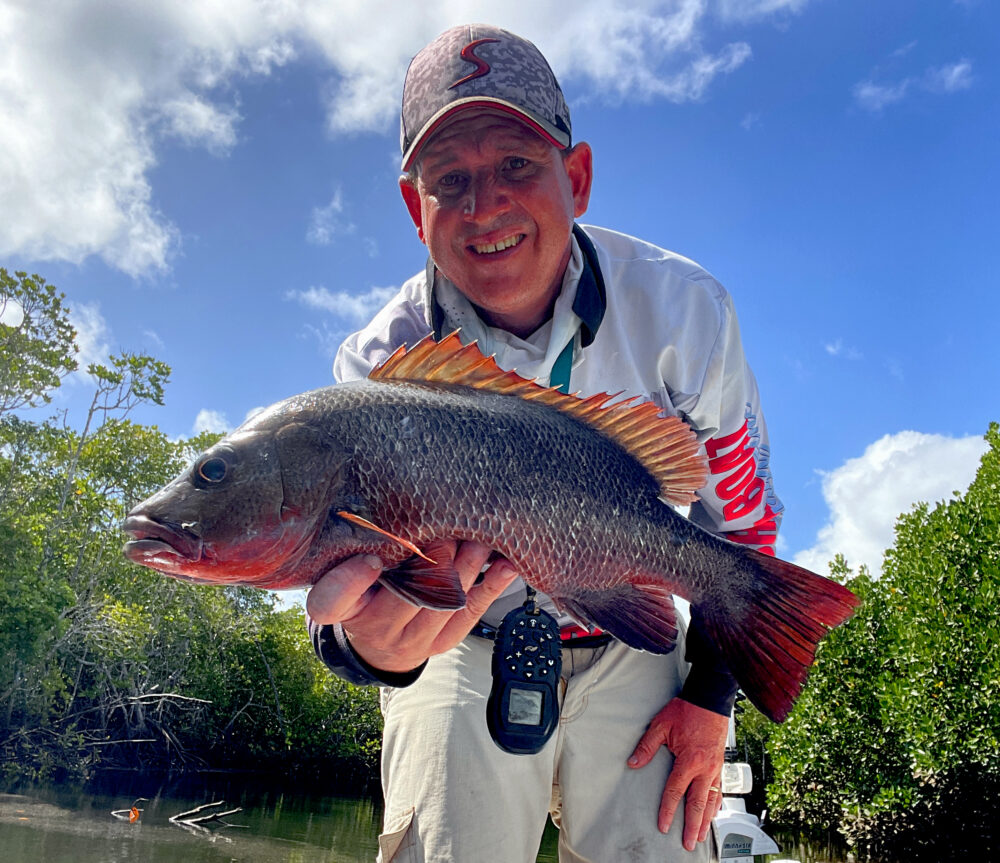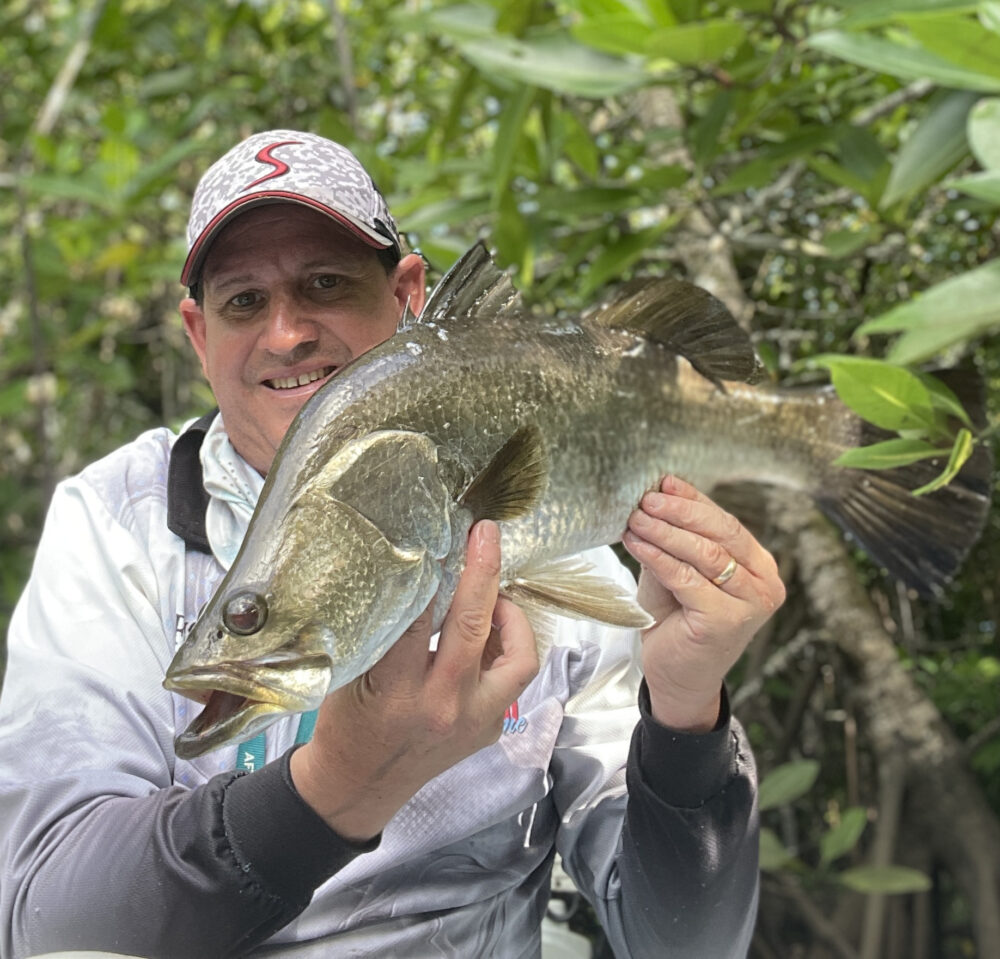Putting in that Perfect Cast – By Dan Kaggelis
The ability to cast accurately is fundamental to lure fishing success. Missing the target area, even by the smallest of margins, can spell the difference between a hook up or another untouched cast. The perfect cast is the one which lands within an inch of where you are aiming. Whether it be across a drain, pressure point, back eddy or simply into a snag, cast too short and your lure is out of the strike zone or cast too far and you end up in the trees. Either way,
having the ability to put your lure on a dime is absolutely necessary if you want to maximize your chances of success.
This was never so evident after a visit from some friends from down south. On their first trip, they were keen to get stuck into the jacks, so I took them to one of my favourite creeks which is typically filled with hungry red fish. Whilst the fish were there, the inability to get their lures in the right spots saw some tough fishing. Skip forward twelve months and the boys had really refined their ability to achieve that perfect cast, which saw the jacks coming over the side thick and fast. So, what are some of the ways you can work towards the perfect cast? The first step is having the right gear for the job. Let’s start with the rod. Rod length and stiffness plays a big role in casting accuracy. Matching the right rod to the right fishing conditions is vital. If you are fishing tight creeks, a smaller stiffer rod is recommended, whilst a longer rod can be better suited for more open areas. The stiffness of a rod tip can also be a major player. Extremely stiff rod tips can make it hard to flick lures and require more imparted effort from the angler. Lighter tips allow for less effort as the lighter tip can work to help flick that lure into the right spot. This is why I love fishing with light gear, in particular, rods. The smallest of wrist movement can punch that lure in with great accuracy. It’s a big reason why I love fishing for species like jungle perch and sooty grunter up in the fresh water reaches of tropical creeks. The lighter gear is a nice change from the stiffer rods I use for jacks and barra and allow for finesse casting thanks to lighter blanks.
The next piece of gear which can help you achieve that perfect cast is your choice of fishing reel. It is my belief that bait cast reels offer far more accuracy than spin reels thanks largely to the ability to thumb the spool which adjusts the length of the cast. Sure, this can be achieved by feathering the line on spin, but it’s a lot more difficult, especially in tight creeks. Bait cast reels also allow for a very controlled method of matching the lure weight to the rod by allowing the angler to adjust the flow of the line off the reel. This takes just a few seconds for the angler to find that sweet spot where the lure begins to fall, and line begins to release, which greatly improves casting accuracy. Couple this with magnetic brake technology which compensates for variables like wind and over casting, and putting that lure in the perfect spot just became much easier.
Next comes your choice of braid. Whilst most braid looks the same, they definelty are not the same. Some braids can become quite flat instead of rounded which can hinder the ability to cast accurately. Some braids also have a fine coating which allows the braid to flow more freely from the reel. This is a good feature but be weary some of these coatings only last for so long whilst more quality braids will hold this for much longer. Next is the ability for the braid to hold water. Some braids can become waterlogged between casts and this is evident when casting by the amount of water spraying off the line. Waterlogged braid can impact the lures flight and trajectory as the heaviness of the braid changes through the cast. Finally, braid thickness is also an important factor. Heavy, thick lines may be strong, but they don’t fly off a spool as well as thinner braids. This is why finding a balance between line diameter and strength will help you achieve that perfect cast. For me, I can’t find a better braid then the newly released Sunline X Plasma.

The Humminbird Side Imaging helps to not only locate fish out to the sides of the boat, but it also allows you to see the distance of the fish, from the boat.
It is one of the thinnest, strongest lines on the market and most importantly repels water which allows it to fly of the spool with ease. I have found the 16lb is perfect for the lighter work and 20lb for more heavier applications and it certainly makes casting with pinpoint accurately so much easier.
Knot selection can also be important. There are plenty of ways to join your leader to your main line but not all knots offer the same resistance through your rod guides. Some knots, whilst easy to tie, can be big and bulky which will impede the lines journey through the guides which in turn reduces your casting accuracy. Other knots such as the FG Knot have a very small profile which means they can slide through the guides unimpeded and allow for a greater shot at achieving that perfect cast. Other factors which can play into this is leader size. Go too heavy or thick with your leader and no matter what knot you tie, you are going to get resistance in your line leaving the rod. Once again finding a balance between leader diameter and strength is crucial. There are many brands of leader material out there and it pays to measure them against each other using the criteria mentioned above. For me I have been fishing leaders such as Sunline V Hard and FC Rock for over 15 years as I find these to be a perfect combination to achieve that perfect cast.

This white sooty was sitting just off an undercut bank and required a pin point cast to get him to eat. Glad he did as it is a cool fish.
Whilst gear is important so is lure weight. The overall weight of your lure in combination with your rod and reel choice can have a massive impact on your ability to cast accurately. Too light and it’s hard to achieve momentum and projection through the air. Too heavy and it feels like you are throwing a brick. Every rod has a recommended rating for lure weight which is a good start to matching your preferred lure size. For example, when I am fishing in the fresh for sooties on the light stuff, my lure selection can be as light as 1/8 ounce which requires a light rod, light tip and light braid and leader. Whilst in the salt chasing jacks and barra I tend to fish ¼ or 3/8-ounce weighted plastics and hardbodies around 13 grams so I can get away with a stiffer rod. In the impoundments its not uncommon to fish lures up to and beyond 60 grams and 2 ounces in weight which require a specialized swim bait rod to improve your chances of a perfect cast. Whilst rod ratings can be an excellent indicator, it’s hard not to go past the feel of the weight of the lure. When you pick up a rigged rod it becomes very obvious whether your lure is matched to your rod so don’t discount this.
Find the right lure weight to your rod and reel and you are on your way to achieving that perfect cast.
Next comes your boat set up. It’s hard to make the perfect cast without a stable casting deck. Having a well set up casting deck allows for space to cast your lure, clear line of sight to where you want to place your lure and most importantly the elevation angles to punch your lure in. By being above the banks and snags allows for the lure to be cast, skip or pitched at a slight downward angle which opens up lots of different structures to the perfect cast. Whilst I have a very good casting deck at the front of my Seajay Nomad, I still prefer to stand right up the bow of the boat to achieve an even greater angle and view of where I want to cast.
The role of technology is also a key factor for achieving that perfect cast. There is no way I will go fishing without my Minnkota Terrova electric motor. It allows me to position the boat perfectly to achieve just the right angle to find that perfect spot amongst the structure quickly and efficiently. Spot lock is also incredible as it provides the angler with time to work over a structure with multiple casts without having to reposition the boat. Then comes the use of Humminbird side imaging and 360 sounder technology. Not only do these awesome sounders show you the fish but also the distance from your boat which takes the guess work out of how far to cast to reach your target. The Humminbird 360 makes this an absolute breeze as it shows not only distance but also direction to cast.
Finally comes practice. There is no substitute for becoming proficient at something than practice. Whilst throwing lures into a bucket in the backyard will improve your casting accuracy, there is no substitute for actually being on the water and casting. The backyard bucket doesn’t move, doesn’t factor in wave movement, wind and angles not to mention the need to adjust your actions based on the environment you are fishing. Getting out in your boat and flicking as many lures as possible is the only way you will get yourself to the level needed to put that lure in the right place every time. Nothing can substitute time on the water.
Achieving the ability to make that perfect cast, time and time again will greatly improve your chances of catching fish. It also makes the sport of lure fishing so much more enjoyable as there is a level of satisfaction when you make that perfect cast, hook up or not. So get out there and get casting!







